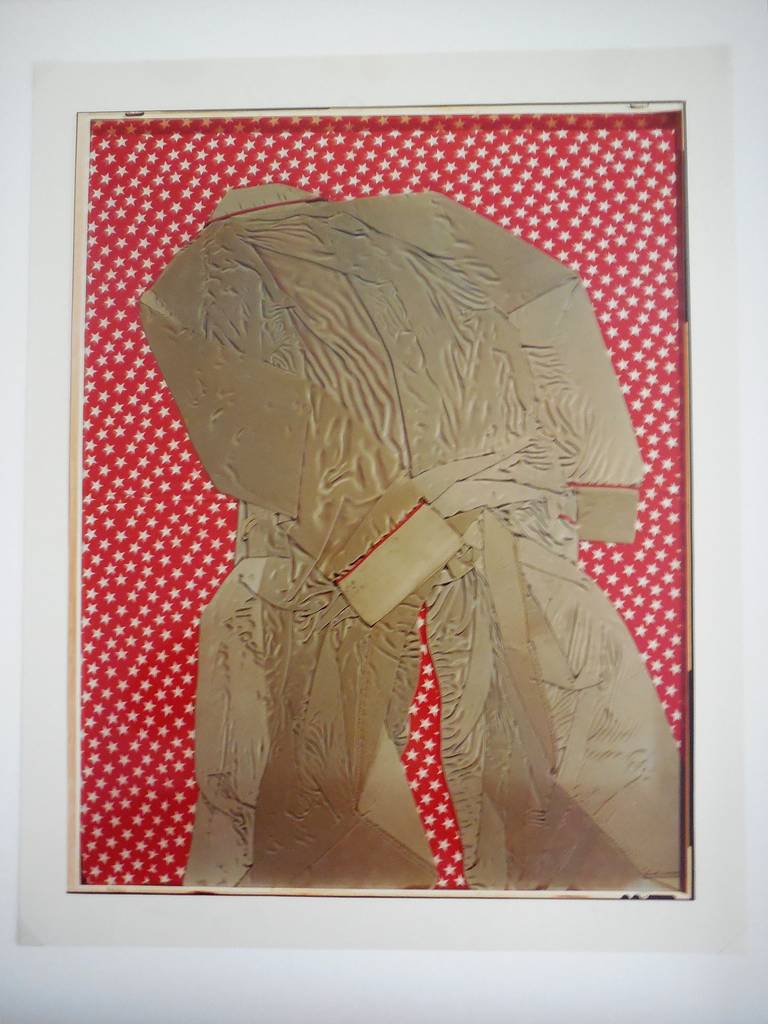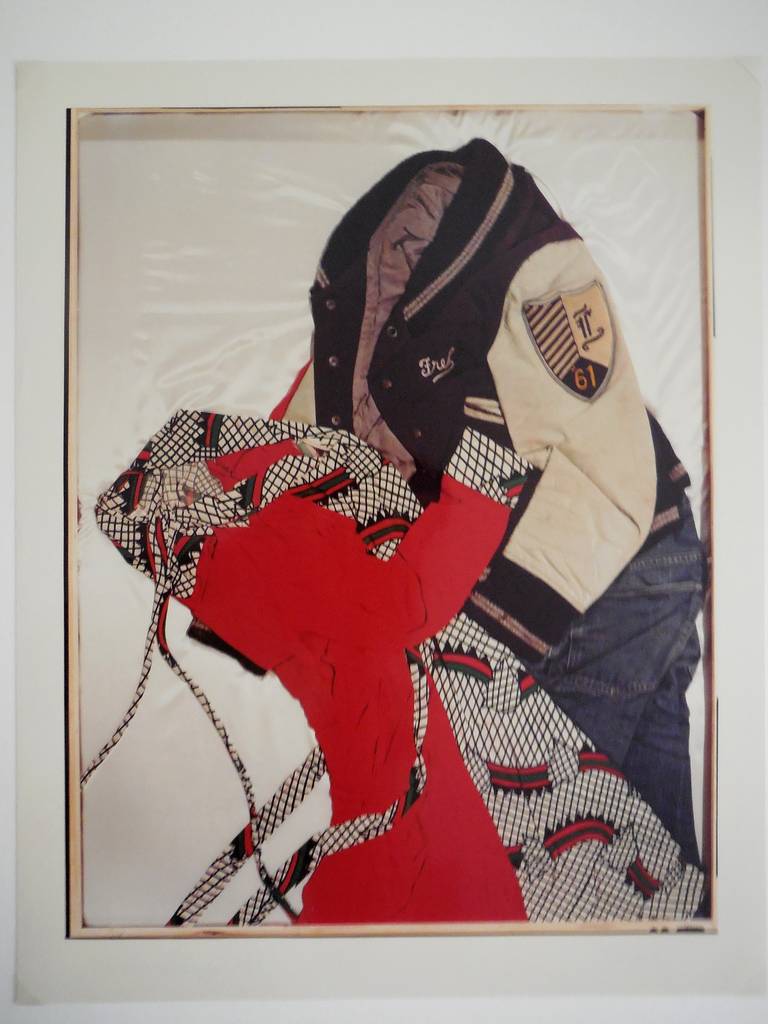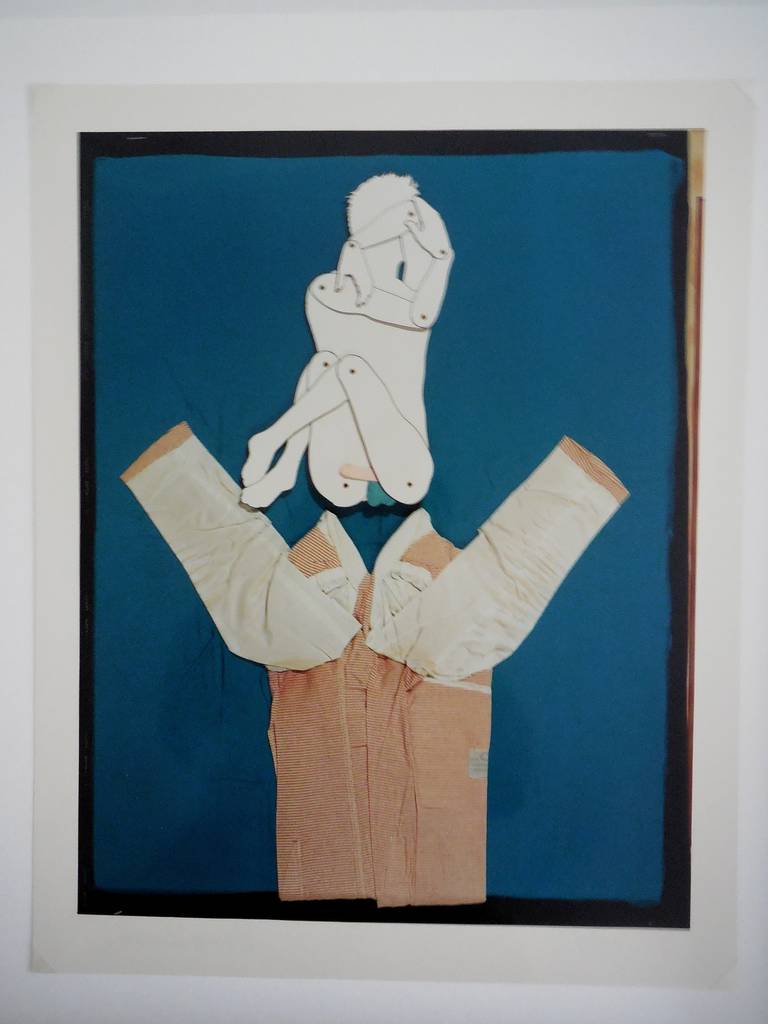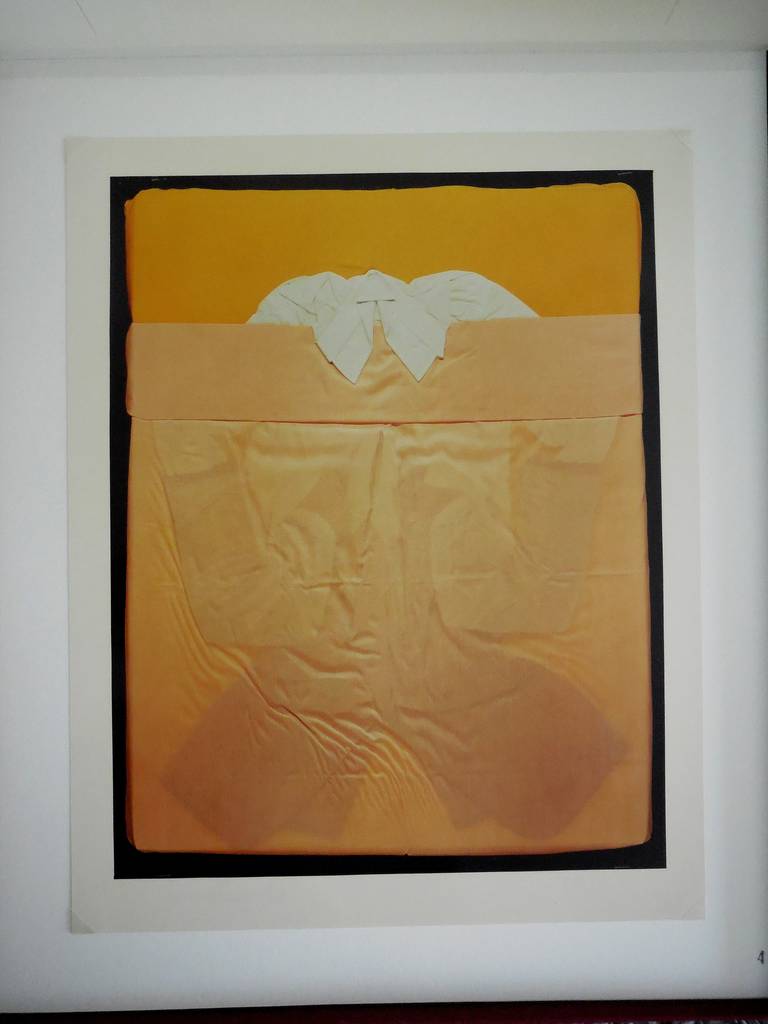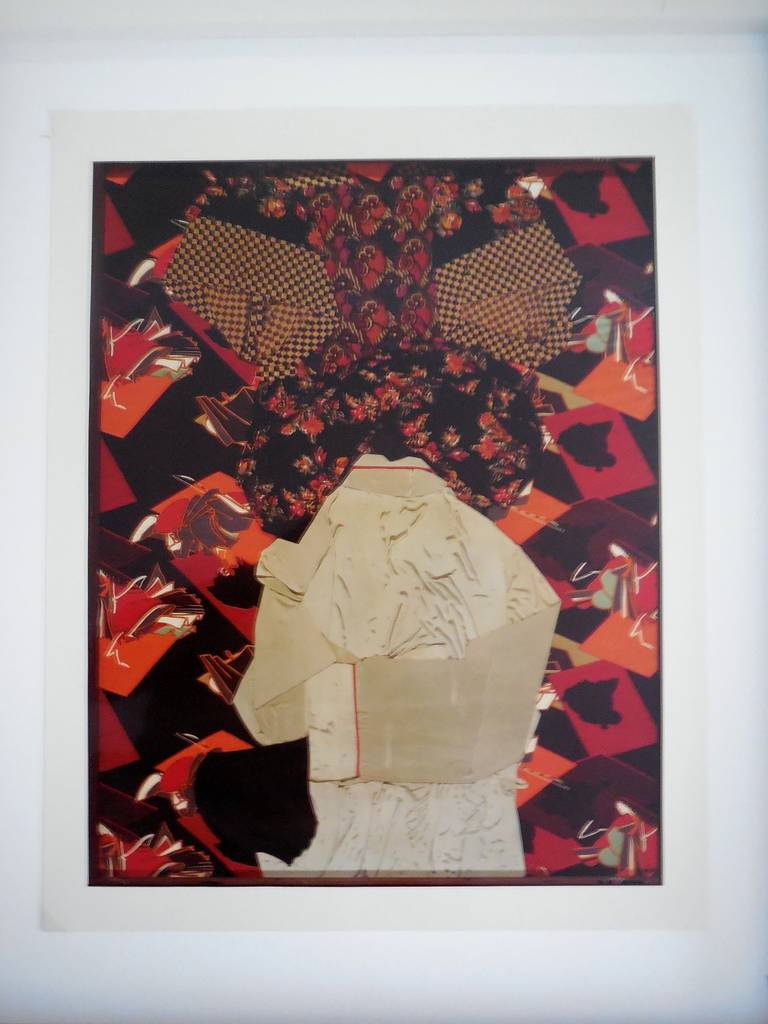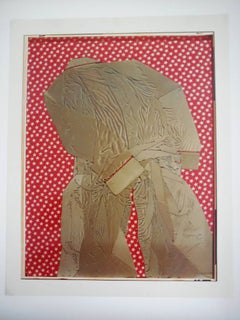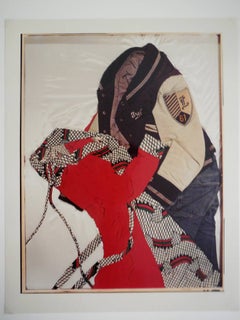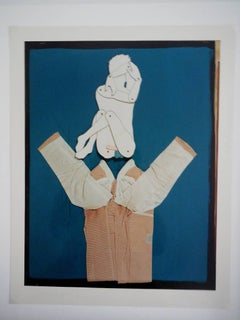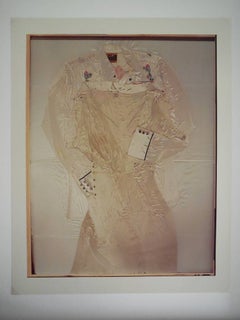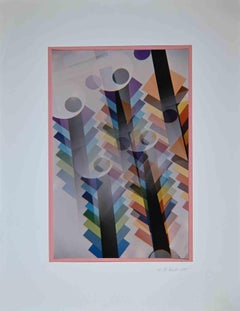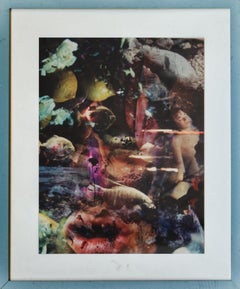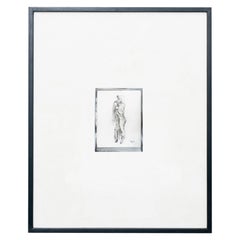Items Similar to Large Harry Bowers Vintage C Print Photograph From Ten Photographs Fashion Photo
Want more images or videos?
Request additional images or videos from the seller
1 of 11
Harry BowersLarge Harry Bowers Vintage C Print Photograph From Ten Photographs Fashion Photo1984
1984
$1,200
£911.19
€1,042.01
CA$1,676.57
A$1,864.72
CHF 973.70
MX$22,691.61
NOK 12,435.60
SEK 11,662.39
DKK 7,776.93
Shipping
Retrieving quote...The 1stDibs Promise:
Authenticity Guarantee,
Money-Back Guarantee,
24-Hour Cancellation
About the Item
HARRY BOWERS
T E N P H O T O G R A P H S
I DON'T LOOK FOR PHOTOGRAPHS I INVENT THEM
I recall my first meeting with Harry Bowers in California a few years ago. As he produced his large-scale prints, I was at first flabbergasted, not only by their size, but by their seamless perfection. Technique appeared to be everything but then technique as technique simply vanished. After the first moment, technique was no longer an issue, but rather a passageway to the imagery.
Suffice it to say about Harry Bowers' working style that he is an obsessive man. Trained as an engineer, he has turned that discipline to art. His lenses, equipment and darkroom, much of it exactingly manufactured by himself to answer certain needs, serve the desire of the artist to take photographic technique to its ultimate perfection in invisibility and transparency. I respect obsession in art, and particularly in photography, because obsession in photography passes beyond the easy, middle ground of image making to a more demanding, more difficult, yet more rewarding end. Bowers' obsession is to eliminate "photography as technique." No grain, no decisive moments, no journalism, or, seemingly, direct autobiographical endeavors appear in his work.
Bowers is an artist of synthesis who controls his environment if only in the studio exactly to his liking. The images he creates are formal structures, saucy stories on occasion, which may offer hints of a darker, more frightening sexuality, but what you see is the end product of an experiment in which nothing save the original insight perhaps is left to chance.
We seem fascinated with the idea of replication of reality in art. Popular painting frequently reproduces a scene "with the accuracy of a photograph," and photographs may "make you feel as though you were right there." The very invisibility of the photographic medium is important to Bowers, in that it allows him to maneuver his subject matter without concern for rendering it in an obvious art medium which would interfere with the nature of the materials he uses. The formal subtleties of Bowers' recent work are as delicious and ambiguous in their interrelationships as the best Cubist collages, yet while those collages always suggest their parts through edge and texture, these photographs present a structure through a surface purity.
Bowers' earlier works, for example, the Skirts I Have Known series, were formed of bits of clothing belonging to Bowers and his wife or found at local thrift shops. These works fused an elegance of pattern and texture, reminiscent of Miriam Shapiro's or Lucas Samaras' fabric paintings, with a sense of theater and, on occasion, high eroticism. These clothes are not simply mashed like baled rags into the glass fronted box which fronts the picture plane, but are actors in a subtle dumb show. Early on, Bowers was surprised that so few people took notice of the erotic element in his work, for it forms a distinct and important component of his images, and one which he has continued to exploit, albeit in different ways.
In the last few years Bowers' work has divided into two parallel modes; one continues his fascination with patterns, textures and stuffs pressed into the transparent picture plane, while the other is more directly anthropomorphic. In this second body of work, Bowers frequently uses articulated shadow figures in black or white, carefully adjusted within the image in a provocative way that is often sexually unsettling. But for all their explicit arrangement, these works may be less suggestive than his earlier clothing tableaus. These newer works are more about space, texture, and the extensions of photography, as well as being a comment on sexuality.
Bowers has always been fascinated with space, and recognizing that it cannot be rendered on a flat surface through the camera, he has set about to create an illusion of space on a shallow plane, a true trompe l'oeil achievement. Within these works, the space is still constructed upon the glass panel of the printing frame, but with elements collaged to its front surface as well as pressed within it. The forms, frequently large black and white photographs (a photographer's conceit on the use of photography), often include a seated or crouching figure dressed only in socks and cutoff dungarees, which add an element of personality. The figure and the way in which it is posed also add a quality of vulnerability to his images, not heretofore seen.
One of the best of these images, HB-28-80, uses a photograph of a figure crouching in a fetal position on a chair. The figure has been cut from its background, and the background, in turn, has been taped to the front of the glass pane while the figure, in perfect register with the background, is laminated behind the glass. One of Bowers' articulated shadow figures, one hand trying to hide its genitals, has been placed on top of the figure, also under the plane of glass. The shadow figure follows the curve of the spine of the photographed figure. One cannot help but feel not only the nakedness and tense embarrassment of these two figures, one real and the other schematic, but the anomalous suggestion of a man carrying a fetus within his body.
Bowers' images extend their power in several ways. They are photographs, which are so pure in their technique as to be clear as water. They deal with precise replications of reality, but a reality which has been recontextualized into episodes of both formal and visceral ambiguity. The best of them are wonderful .. contrivances" -his word-and are as frightening in their psychological implications as they are elegant in their visual form.
Thomas H. Garver, Director Madison Art Center
"I follow fashion. I have closets literally full of clothes. I am a full-blown Comme des Garçons and Prada freak. I love clothes themselves as objects, and I also love the glossies – my love of fashion is how I discovered Wallpaper magazine."
- Creator:Harry Bowers (1938, American)
- Creation Year:1984
- Dimensions:Height: 20 in (50.8 cm)Width: 16 in (40.64 cm)
- Medium:
- Period:
- Condition:
- Gallery Location:Surfside, FL
- Reference Number:1stDibs: LU38210681222
About the Seller
4.9
Platinum Seller
Premium sellers with a 4.7+ rating and 24-hour response times
Established in 1995
1stDibs seller since 2014
1,784 sales on 1stDibs
Typical response time: <1 hour
- ShippingRetrieving quote...Shipping from: Surfside, FL
- Return Policy
Authenticity Guarantee
In the unlikely event there’s an issue with an item’s authenticity, contact us within 1 year for a full refund. DetailsMoney-Back Guarantee
If your item is not as described, is damaged in transit, or does not arrive, contact us within 7 days for a full refund. Details24-Hour Cancellation
You have a 24-hour grace period in which to reconsider your purchase, with no questions asked.Vetted Professional Sellers
Our world-class sellers must adhere to strict standards for service and quality, maintaining the integrity of our listings.Price-Match Guarantee
If you find that a seller listed the same item for a lower price elsewhere, we’ll match it.Trusted Global Delivery
Our best-in-class carrier network provides specialized shipping options worldwide, including custom delivery.More From This Seller
View AllLarge Harry Bowers Vintage C Print Photograph From Ten Photographs Fashion Photo
By Harry Bowers
Located in Surfside, FL
HARRY BOWERS
T E N P H O T O G R A P H S
I DON'T LOOK FOR PHOTOGRAPHS I INVENT THEM
I recall my first meeting with Harry Bowers in California a few years ago. As he produced his large-scale prints, I was at first flabbergasted, not only by their size, but by their seamless perfection. Technique appeared to be everything but then technique as technique simply vanished. After the first moment, technique was no longer an issue, but rather a passageway to the imagery.
Suffice it to say about Harry Bowers' working style that he is an obsessive man. Trained as an engineer, he has turned that discipline to art. His lenses, equipment and darkroom, much of it exactingly manufactured by himself to answer certain needs, serve the desire of the artist to take photographic technique to its ultimate perfection in invisibility and transparency. I respect obsession in art, and particularly in photography, because obsession in photography passes beyond the easy, middle ground of image making to a more demanding, more difficult, yet more rewarding end. Bowers' obsession is to eliminate "photography as technique." No grain, no decisive moments, no journalism, or, seemingly, direct autobiographical endeavors appear in his work.
Bowers is an artist of synthesis who controls his environment if only in the studio exactly to his liking. The images he creates are formal structures, saucy stories on occasion, which may offer hints of a darker, more frightening sexuality, but what you see is the end product of an experiment in which nothing save the original insight perhaps is left to chance.
We seem fascinated with the idea of replication of reality in art. Popular painting frequently reproduces a scene "with the accuracy of a photograph," and photographs may "make you feel as though you were right there." The very invisibility of the photographic medium is important to Bowers, in that it allows him to maneuver his subject matter without concern for rendering it in an obvious art medium which would interfere with the nature of the materials he uses. The formal subtleties of Bowers' recent work are as delicious and ambiguous in their interrelationships as the best Cubist collages, yet while those collages always suggest their parts through edge and texture, these photographs present a structure through a surface purity.
Bowers' earlier works, for example, the Skirts I Have Known series, were formed of bits of clothing belonging to Bowers and his wife or found at local thrift shops. These works fused an elegance of pattern and texture, reminiscent of Miriam Shapiro...
Category
1980s American Modern Photography
Materials
Photographic Paper, C Print
Rare Harry Bowers Vintage C Print Photograph From Ten Photographs Fashion Photo
By Harry Bowers
Located in Surfside, FL
HARRY BOWERS
T E N P H O T O G R A P H S
I DON'T LOOK FOR PHOTOGRAPHS I INVENT THEM
I recall my first meeting with Harry Bowers in California a few years ago. As he produced his large-scale prints, I was at first flabbergasted, not only by their size, but by their seamless perfection. Technique appeared to be everything but then technique as technique simply vanished. After the first moment, technique was no longer an issue, but rather a passageway to the imagery.
Suffice it to say about Harry Bowers' working style that he is an obsessive man. Trained as an engineer, he has turned that discipline to art. His lenses, equipment and darkroom, much of it exactingly manufactured by himself to answer certain needs, serve the desire of the artist to take photographic technique to its ultimate perfection in invisibility and transparency. I respect obsession in art, and particularly in photography, because obsession in photography passes beyond the easy, middle ground of image making to a more demanding, more difficult, yet more rewarding end. Bowers' obsession is to eliminate "photography as technique." No grain, no decisive moments, no journalism, or, seemingly, direct autobiographical endeavors appear in his work.
Bowers is an artist of synthesis who controls his environment if only in the studio exactly to his liking. The images he creates are formal structures, saucy stories on occasion, which may offer hints of a darker, more frightening sexuality, but what you see is the end product of an experiment in which nothing save the original insight perhaps is left to chance.
We seem fascinated with the idea of replication of reality in art. Popular painting frequently reproduces a scene "with the accuracy of a photograph," and photographs may "make you feel as though you were right there." The very invisibility of the photographic medium is important to Bowers, in that it allows him to maneuver his subject matter without concern for rendering it in an obvious art medium which would interfere with the nature of the materials he uses. The formal subtleties of Bowers' recent work are as delicious and ambiguous in their interrelationships as the best Cubist collages, yet while those collages always suggest their parts through edge and texture, these photographs present a structure through a surface purity.
Bowers' earlier works, for example, the Skirts I Have Known series, were formed of bits of clothing belonging to Bowers and his wife or found at local thrift shops. These works fused an elegance of pattern and texture, reminiscent of Miriam Shapiro...
Category
1980s Photography
Materials
Photographic Paper
Large Harry Bowers Vintage C Print Photograph From Ten Photographs Fashion Photo
By Harry Bowers
Located in Surfside, FL
HARRY BOWERS
T E N P H O T O G R A P H S
I DON'T LOOK FOR PHOTOGRAPHS I INVENT THEM
I recall my first meeting with Harry Bowers in California a few years ago. As he produced his large-scale prints, I was at first flabbergasted, not only by their size, but by their seamless perfection. Technique appeared to be everything but then technique as technique simply vanished. After the first moment, technique was no longer an issue, but rather a passageway to the imagery.
Suffice it to say about Harry Bowers' working style that he is an obsessive man. Trained as an engineer, he has turned that discipline to art. His lenses, equipment and darkroom, much of it exactingly manufactured by himself to answer certain needs, serve the desire of the artist to take photographic technique to its ultimate perfection in invisibility and transparency. I respect obsession in art, and particularly in photography, because obsession in photography passes beyond the easy, middle ground of image making to a more demanding, more difficult, yet more rewarding end. Bowers' obsession is to eliminate "photography as technique." No grain, no decisive moments, no journalism, or, seemingly, direct autobiographical endeavors appear in his work.
Bowers is an artist of synthesis who controls his environment if only in the studio exactly to his liking. The images he creates are formal structures, saucy stories on occasion, which may offer hints of a darker, more frightening sexuality, but what you see is the end product of an experiment in which nothing save the original insight perhaps is left to chance.
We seem fascinated with the idea of replication of reality in art. Popular painting frequently reproduces a scene "with the accuracy of a photograph," and photographs may "make you feel as though you were right there." The very invisibility of the photographic medium is important to Bowers, in that it allows him to maneuver his subject matter without concern for rendering it in an obvious art medium which would interfere with the nature of the materials he uses. The formal subtleties of Bowers' recent work are as delicious and ambiguous in their interrelationships as the best Cubist collages, yet while those collages always suggest their parts through edge and texture, these photographs present a structure through a surface purity.
Bowers' earlier works, for example, the Skirts I Have Known series, were formed of bits of clothing belonging to Bowers and his wife or found at local thrift shops. These works fused an elegance of pattern and texture, reminiscent of Miriam Shapiro...
Category
1980s Arte Povera Photography
Materials
Photographic Paper, C Print
Rare Large Harry Bowers Vintage C Print Photograph Ten Photographs Fashion Photo
By Harry Bowers
Located in Surfside, FL
HARRY BOWERS
T E N P H O T O G R A P H S
I DON'T LOOK FOR PHOTOGRAPHS I INVENT THEM
I recall my first meeting with Harry Bowers in California a few years ago. As he produced his large-scale prints, I was at first flabbergasted, not only by their size, but by their seamless perfection. Technique appeared to be everything but then technique as technique simply vanished. After the first moment, technique was no longer an issue, but rather a passageway to the imagery.
Suffice it to say about Harry Bowers' working style that he is an obsessive man. Trained as an engineer, he has turned that discipline to art. His lenses, equipment and darkroom, much of it exactingly manufactured by himself to answer certain needs, serve the desire of the artist to take photographic technique to its ultimate perfection in invisibility and transparency. I respect obsession in art, and particularly in photography, because obsession in photography passes beyond the easy, middle ground of image making to a more demanding, more difficult, yet more rewarding end. Bowers' obsession is to eliminate "photography as technique." No grain, no decisive moments, no journalism, or, seemingly, direct autobiographical endeavors appear in his work.
Bowers is an artist of synthesis who controls his environment if only in the studio exactly to his liking. The images he creates are formal structures, saucy stories on occasion, which may offer hints of a darker, more frightening sexuality, but what you see is the end product of an experiment in which nothing save the original insight perhaps is left to chance.
We seem fascinated with the idea of replication of reality in art. Popular painting frequently reproduces a scene "with the accuracy of a photograph," and photographs may "make you feel as though you were right there." The very invisibility of the photographic medium is important to Bowers, in that it allows him to maneuver his subject matter without concern for rendering it in an obvious art medium which would interfere with the nature of the materials he uses. The formal subtleties of Bowers' recent work are as delicious and ambiguous in their interrelationships as the best Cubist collages, yet while those collages always suggest their parts through edge and texture, these photographs present a structure through a surface purity.
"I follow fashion. I have closets literally full of clothes. I am a full-blown Comme des Garçons and Prada freak. I love clothes themselves as objects, and I also love the glossies – my love of fashion is how I discovered Wallpaper magazine" Bowers' earlier works, for example, the Skirts I Have Known series, were formed of bits of clothing belonging to Bowers and his wife or found at local thrift shops. These works fused an elegance of pattern and texture, reminiscent of Miriam Shapiro...
Category
1980s Photography
Materials
Photographic Paper
Rare Large Harry Bowers Vintage C Print Photograph Ten Photographs Fashion Photo
By Harry Bowers
Located in Surfside, FL
HARRY BOWERS
T E N P H O T O G R A P H S
I DON'T LOOK FOR PHOTOGRAPHS I INVENT THEM
I recall my first meeting with Harry Bowers in California a few years ago. As he produc...
Category
1980s Pop Art Photography
Materials
Photographic Paper
Rare Harry Bowers Vintage C Print Photograph From Ten Photographs Fashion Shot
By Harry Bowers
Located in Surfside, FL
HARRY BOWERS
T E N P H O T O G R A P H S
I DON'T LOOK FOR PHOTOGRAPHS I INVENT THEM
I recall my first meeting with Harry Bowers in California a few years ago. As he produc...
Category
1980s 85 New Wave Photography
Materials
C Print
You May Also Like
"Fashion Nude", 1980, Color Photograph by Rebecca Blake
By Rebecca Blake
Located in Long Island City, NY
Artist: Rebecca Blake
Title: Fashion Nude
Year: 1980
Medium: Color Photograph, signed and dated l.r.
Image: 13 x 9 in. (33.02 x 22.86 cm)
Frame Size: 21 x 16 in.
Category
1980s Post-Modern Color Photography
Materials
Color
Exibition Print from Late Work by Miller Null - Vintage Photograph - 1995
Located in Roma, IT
Exibition print from late work by Miller Null is a vintage photographic print on color paper applied on cardboard.
Signature in pencil on front of cardboard, dated 1995, a late prin...
Category
1990s Abstract More Prints
Materials
Photographic Paper
Jane Calvin Composite Photograph, 1990
By Jane Calvin
Located in New York, NY
Jane Calvin (American, b. 1938)
Untitled, 1990
Photograph
Sight: 19 1/2 x 15 1/2 in.
Framed: 26 7/8 x 22 1/2 x 1 1/4 in.
Edition 2/10
Provenance: Collection of Robert Burge, New Y...
Category
1990s Contemporary Color Photography
Materials
Color
Manolo Hugue Archive Photography, circa 1960
Located in Barcelona, Barcelona
Manolo Hugué archive photography.
Printed, circa 1960.
In original condition, with minor wear consistent with age and use, preserving a beautiful patina.
The photography comes...
Category
Vintage 1960s Spanish Mid-Century Modern Photography
Materials
Glass, Wood, Paper
$748 Sale Price
50% Off
Original Photograph by Cleo Sullivan
Located in Asbury Park, NJ
Entitled "Kumi" - a 16" x 20" C print from negative in black wooden frame with white matte. Included is valid documentation of its original sale.
Category
20th Century American Photography
Manolo Hugue Archive Photography, circa 1960
Located in Barcelona, Barcelona
Manolo Hugué archive photography.
Printed, circa 1960.
In original condition, with minor wear consistent with age and use, preserving a beautiful patina.
The photography comes...
Category
Vintage 1960s Spanish Mid-Century Modern Photography
Materials
Glass, Wood, Paper
$748 Sale Price
50% Off
More Ways To Browse
Large Vintage Photo
Naked Photo
Large Vintage Photography
Photography Vintage Background
Vintage Fashion Magazine
Vintage Nature Photograph
Fashion Photography Erotic
Large Shadow Box
Vintage Erotic Photography
Explicit Erotic Art
Crouching Figure
1984 Clothing
Vintage Clothing Photography
Erotic Dress
Comme Des Garcons Black Skirt
Framed Wallpaper Panel
White 80s Chairs
S L Fashions Vintage Dress
